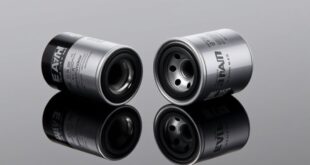Ford Type F Transmission Fluid is a synthetic fluid crafted for Ford's F type automatic transmissions. It enhances shift quality and reduces wear, featuring additives that extend transmission life and perform well in extreme temperatures. This fluid can also be used in older Ford models previously requiring Type FA. Users should consult their vehicle manuals for compatibility and maintenance recommendations. Further details about its benefits and additional applications can provide valuable insights.
Overview of Type F Transmission Fluid
Although Type F transmission fluid has largely been replaced by newer formulations, it remains a significant choice for certain Ford vehicles, particularly those with F type automatic transmissions.
This high-performance, synthetic fluid is specifically designed to enhance shift quality and reduce transmission wear. Formulated with special additives, Type F prolongs the lifespan of the transmission while performing exceptionally in extreme temperatures.
Its compatibility with various transmission types makes it an appealing option for those seeking quality fluid. Additionally, it can fulfill the needs of other makes and models that require synthetic automatic transmission fluid, showcasing its versatility.
Usage and Compatibility
Type F transmission fluid is primarily utilized in Ford vehicles equipped with automatic transmissions, offering a reliable solution for maintaining peak performance.
This fluid can also substitute in older Ford models that originally used Type FA transmission fluid.
While universal transmission fluids labeled as multi-vehicle may be used, it is essential to verify compatibility with specific transmissions beforehand.
Availability of Type F transmission fluid and its alternatives can be found at automotive parts stores or online retailers.
Users are encouraged to consult their vehicle's manual for specific recommendations to guarantee ideal performance and longevity of their transmission system.
Historical Context and Transition
As the automotive industry evolved, so did the fluids designed for vehicle performance, culminating in the widespread use of Type F transmission fluid in Ford vehicles until 1967. This fluid played a crucial role in enhancing transmission operation during its era.
The change to Type G fluid marked a significant shift in technology and formulation, responding to the increasing demands of modern vehicles. While Type F was phased out, some older models continued to utilize it.
Its legacy remains significant in the history of automotive fluids, illustrating the industry's progression toward more advanced lubrication solutions.
Motorcraft Type F Transmission Fluid
Designed to meet the demands of modern transmissions, Motorcraft Type F transmission fluid stands out as a premium product in the automotive market.
This fluid is engineered to provide exceptional protection and performance, making it suitable for various applications.
Key features include:
- Wear Protection: Reduces wear and prolongs transmission lifespan.
- Corrosion Resistance: Protects against rust and corrosion, enhancing component longevity.
- Temperature Stability: Performs reliably in extreme temperatures, ensuring smooth operation.
Regular fluid changes are essential to maintain peak performance, ensuring that vehicles equipped with this fluid operate efficiently and effectively across different driving conditions.
Additional Information and Resources
Understanding the importance of regular maintenance and fluid checks extends beyond just Motorcraft Type F transmission fluid. Type F is also essential for power steering systems, ensuring proper lubrication and hydraulic pressure. Regularly checking and topping off the fluid can greatly enhance vehicle performance. For detailed maintenance guidelines, one should consult the owner's manual or seek advice from a qualified automotive technician. Additional resources can be found through automotive blogs and affiliate programs providing insights into fluid care and maintenance.
| Resource Type | Description | Access Method |
|---|---|---|
| Owner's Manual | Vehicle-specific maintenance tips | In the glove box |
| Automotive Blogs | Tips and guides | Online search |
| Technician Support | Professional advice | Local automotive shop |
Frequently Asked Questions
Can I Mix Type F Fluid With Other Transmission Fluids?
Mixing different transmission fluids can lead to adverse effects on performance and compatibility. It's generally advised to use the specified fluid type for best function, maintaining the integrity and longevity of the transmission system.
How Often Should I Change My Type F Transmission Fluid?
The recommended frequency for changing transmission fluid typically ranges from 30,000 to 60,000 miles, depending on vehicle usage and manufacturer guidelines. Regular maintenance guarantees peak performance and longevity of the transmission system.
What Are the Signs of Low Transmission Fluid Levels?
Signs of low transmission fluid levels include slipping gears, delayed shifting, unusual noises, overheating, and warning lights on the dashboard. Regular checks can help identify these issues early, preventing potential transmission damage and costly repairs.
Is Type F Fluid Suitable for Racing Applications?
The suitability of a specific transmission fluid for racing applications depends on its performance characteristics. High-performance fluids designed for extreme conditions, like specialized additives and thermal stability, are typically preferred to enhance shift quality and reduce wear.
Can Type F Fluid Improve Shifting Performance in Older Vehicles?
The effectiveness of certain transmission fluids in enhancing shifting performance in older vehicles largely depends on their formulation. High-quality fluids with specific additives can indeed improve shift quality and reduce wear, benefiting older transmission systems considerably.
 Car Service Land Coupons for Oil change, Tires, Wheel alignment, Brakes, Maintenance
Car Service Land Coupons for Oil change, Tires, Wheel alignment, Brakes, Maintenance




